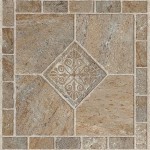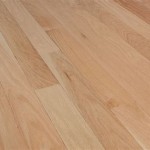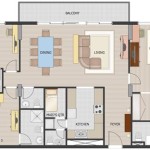Area Rugs for Grey Floors: A Guide to Choosing the Perfect Complement
Grey flooring has become a staple in contemporary interior design, offering a versatile and neutral backdrop for a variety of styles. Its popularity stems from its ability to create a sense of calm and sophistication, while simultaneously providing a blank canvas for furniture and decor. However, the neutrality of grey can sometimes feel cold or stark. Area rugs offer an effective solution, injecting warmth, personality, and visual interest into spaces with grey floors.
Understanding the Nuances of Grey
Grey flooring isn't monolithic. It comes in a spectrum of shades, from light, airy dove grey to deep, dramatic charcoal. The undertones of grey also vary significantly. Some greys lean towards blue or purple, while others have warmer beige or brown undertones. Understanding the specific shade and undertone of your grey flooring is crucial for selecting a complementary rug. A cool-toned grey floor, for example, might pair well with a rug featuring blues or greens, while a warmer grey floor might benefit from a rug with earthy tones like rust or ochre.
Considering Room Function and Size
The purpose of a room significantly influences the choice of area rug. In high-traffic areas like hallways or living rooms, durability is paramount. Opt for rugs made from materials like wool, jute, or synthetic fibers designed to withstand wear and tear. In bedrooms or less-used spaces, softer, more luxurious materials like silk or shag can be considered. Room size also plays a crucial role. A rug that is too small can make the room feel disjointed, while a rug that is too large can overwhelm the space. Standard sizing guidelines recommend leaving a border of exposed flooring around the rug's perimeter.
Exploring Color and Pattern Options
The vast array of rug colors and patterns allows for endless design possibilities. A rug can either complement the grey flooring by echoing its undertones or create a striking contrast. For a cohesive look, consider rugs with colors that are a few shades lighter or darker than the floor. This creates a subtle transition and maintains a sense of calm. For a bolder statement, opt for contrasting colors like jewel tones, rich reds, or vibrant yellows. Patterned rugs can add further dimension and personality. Geometric patterns lend a modern touch, while floral or traditional designs create a more classic ambiance.
When choosing a patterned rug, consider the existing patterns and textures in the room. If the furniture is heavily patterned, a simpler rug might be a better choice to avoid visual clutter. Conversely, if the furniture is relatively plain, a bold patterned rug can become the focal point of the room. Texture also plays a vital role. A high-pile rug adds a cozy and inviting feel, while a flatweave rug offers a more streamlined and contemporary look.
Defining Style and Creating Cohesion
The overall style of the room should inform the choice of rug. A minimalist space might benefit from a simple, neutral-toned rug with a subtle texture. A bohemian-inspired room could feature a vibrant rug with intricate patterns and tassels. For a mid-century modern aesthetic, consider a geometric patterned rug in warm tones. The rug should not exist in isolation but rather complement the existing furniture, wall colors, and decor to create a cohesive and harmonious space.
Consider the existing furniture pieces and their placement in relation to the rug. In a living room, for example, the front legs of the sofa and armchairs should ideally rest on the rug to anchor the seating area. In a dining room, the rug should be large enough to accommodate the table and chairs even when pulled out. Careful consideration of these practical aspects ensures that the rug enhances both the aesthetics and functionality of the room.
Material Selection and Maintenance
Rug materials vary significantly in terms of durability, texture, and maintenance requirements. Wool rugs are known for their resilience, softness, and natural stain resistance. Jute rugs offer a more rustic and textured look, while synthetic rugs provide a cost-effective and easy-to-clean option. Silk rugs offer luxurious softness and sheen but require more delicate care. Understanding the characteristics of different materials allows for informed decision-making based on individual needs and preferences.
Regular maintenance is essential to preserve the beauty and longevity of any rug. Vacuuming regularly helps remove dust and dirt, while professional cleaning is recommended periodically for deeper cleaning and stain removal. Rotating the rug periodically helps ensure even wear. Following manufacturer care instructions and addressing spills promptly can help maintain the rug's appearance and extend its lifespan.

What Color Rugs Go With Grey Floors 12 Ideas Flooring Floor Rug

What Color Rug Goes With Gray Floors 15 Stylish And Elegant Options Roomdsign Com

What Color Rug Goes With Grey Floor Find The Perfect Match

What Color Rugs Go With Grey Floors In 2024

What Color Rugs Go With Grey Floors 12 Ideas Bedroom Area Rug Flooring Southwestern

15 Stunning Rugs That Go With A Grey Couch Décor Aid

Luxi Abstract Modern Area Rug Grey And Blue The Rugs Outlet

6 Rugs You Can Use To Warm Up Gray Wood Flooring Hardwood Floors

Choosing A Rug To Match Your Floor Type Land Of Rugs

Grey Concrete Floor Mat Scandinavian Style Modern Rug Etsy Flooring Floors Vinyl Wood Planks








